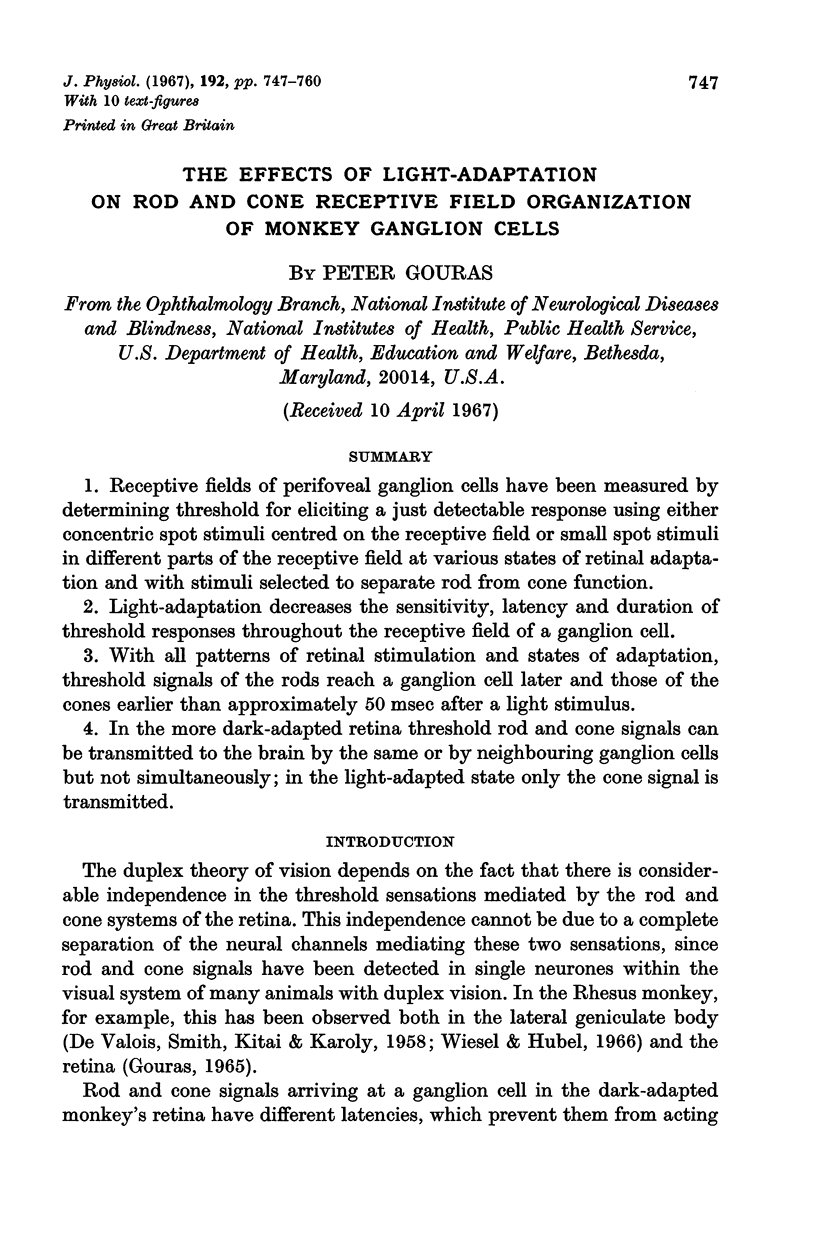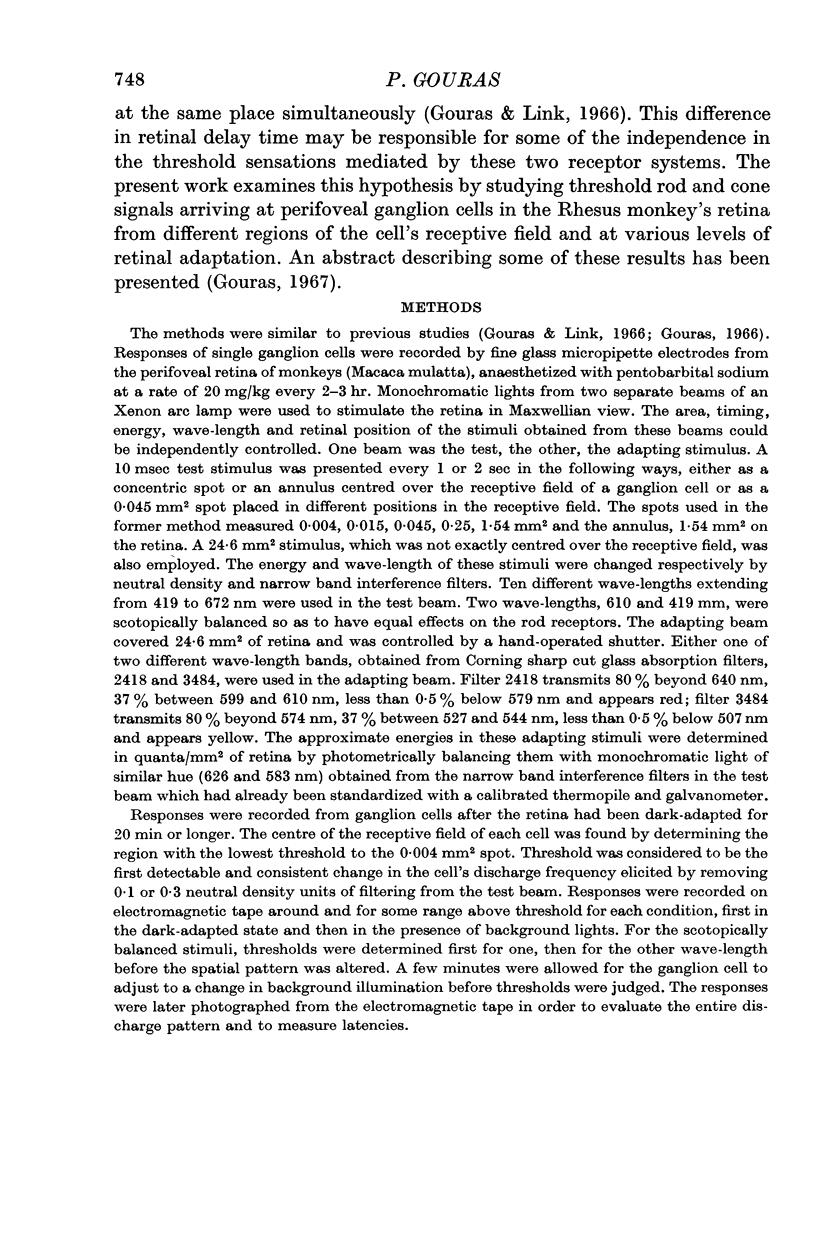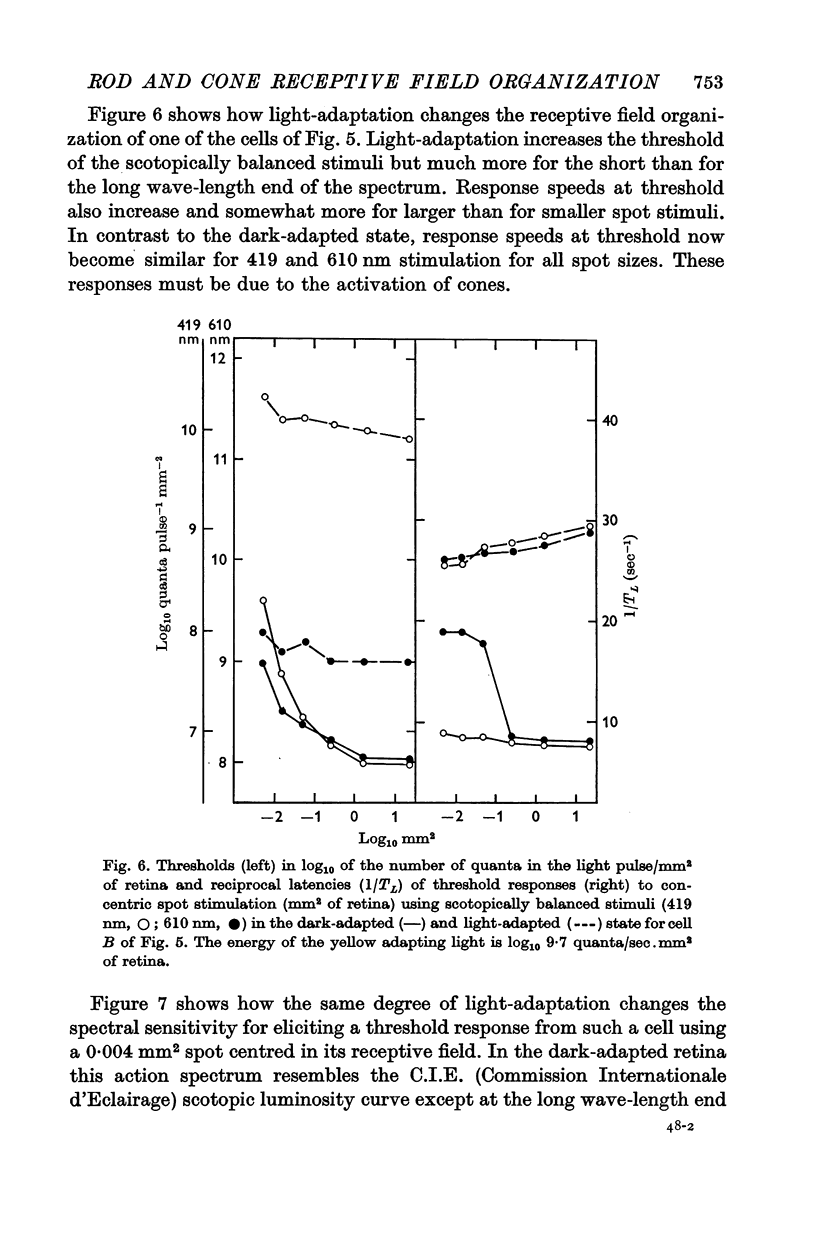Abstract
1. Receptive fields of perifoveal ganglion cells have been measured by determining threshold for eliciting a just detectable response using either concentric spot stimuli centred on the receptive field or small spot stimuli in different parts of the receptive field at various states of retinal adaptation and with stimuli selected to separate rod from cone function.
2. Light-adaptation decreases the sensitivity, latency and duration of threshold responses throughout the receptive field of a ganglion cell.
3. With all patterns of retinal stimulation and states of adaptation, threshold signals of the rods reach a ganglion cell later and those of the cones earlier than approximately 50 msec after a light stimulus.
4. In the more dark-adapted retina threshold rod and cone signals can be transmitted to the brain by the same or by neighbouring ganglion cells but not simultaneously; in the light-adapted state only the cone signal is transmitted.
Full text
PDF













Selected References
These references are in PubMed. This may not be the complete list of references from this article.
- BARLOW H. B., FITZHUGH R., KUFFLER S. W. Change of organization in the receptive fields of the cat's retina during dark adaptation. J Physiol. 1957 Aug 6;137(3):338–354. doi: 10.1113/jphysiol.1957.sp005817. [DOI] [PMC free article] [PubMed] [Google Scholar]
- BARLOW H. B., HILL R. M., LEVICK W. R. RETINAL GANGLION CELLS RESPONDING SELECTIVELY TO DIRECTION AND SPEED OF IMAGE MOTION IN THE RABBIT. J Physiol. 1964 Oct;173:377–407. doi: 10.1113/jphysiol.1964.sp007463. [DOI] [PMC free article] [PubMed] [Google Scholar]
- DE VALOIS R. L., SMITH C. J., KITAI S. T., KAROLY A. J. Response of single cells in monkey lateral geniculate nucleus to monochromatic light. Science. 1958 Jan 31;127(3292):238–239. doi: 10.1126/science.127.3292.238. [DOI] [PubMed] [Google Scholar]
- GOURAS P. PRIMATE RETINA: DUPLEX FUNCTION OF DARK-ADAPTED GANGLION CELLS. Science. 1965 Mar 26;147(3665):1593–1594. doi: 10.1126/science.147.3665.1593. [DOI] [PubMed] [Google Scholar]
- Gouras P., Link K. Rod and cone interaction in dark-adapted monkey ganglion cells. J Physiol. 1966 May;184(2):499–510. doi: 10.1113/jphysiol.1966.sp007928. [DOI] [PMC free article] [PubMed] [Google Scholar]
- Gouras P. Rod and cone independence in the electroretinogram of the dark-adapted monkey's perifovea. J Physiol. 1966 Nov;187(2):455–464. doi: 10.1113/jphysiol.1966.sp008103. [DOI] [PMC free article] [PubMed] [Google Scholar]
- PIRENNE M. H., DENTON E. J. Accuracy and sensitivity of the human eye. Nature. 1952 Dec 20;170(4338):1039–1042. doi: 10.1038/1701039a0. [DOI] [PubMed] [Google Scholar]
- Wiesel T. N., Hubel D. H. Spatial and chromatic interactions in the lateral geniculate body of the rhesus monkey. J Neurophysiol. 1966 Nov;29(6):1115–1156. doi: 10.1152/jn.1966.29.6.1115. [DOI] [PubMed] [Google Scholar]


